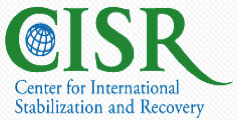How JMU is improving conventional weapons destruction around the globe
Nation and World A GIS mapping system and database that will improve destruction of conventional weapons around the world is being designed at JMU.
A GIS mapping system and database that will improve destruction of conventional weapons around the world is being designed at JMU.
The Center for International Stabilization and Recovery at JMU was awarded $249,948 from the U.S. Department of State to design and maintain the system with collaboration from faculty and students in the geography program within the department of integrated science and technology.
Using GIS software and desktop computer products designed by ESRI, the system will collect real-time conventional weapons destruction data from countries with contamination and incorporate existing and archival data from various platforms. The project team will analyze the data to create an online library of maps, infographics and other data products available to the U.S. Department of State and to the broader conventional weapons destruction community at no cost. The resulting data will improve strategic planning in the field to prioritize weapons clearance and abatement operations, and communications with donors and host governments.
Organizations that will use the system are working in post-conflict countries to remediate the harmful effects of landmines, unexploded ordnance and other conventional weapons of war.
A needs assessment is being conducted at the start of the project to ensure the most useful product is designed, said Heather Holsinger, communications and publications manager for CISR. Once the needs assessment is complete, the baseline product will be available for use in about six weeks, she said. Work will continue for some time after that to add archival data to the system.
Paul Rittenhouse, geospatial projects coordinator and ISAT instructor, said the project will give students a real life model for how versatile GIS applications are across many fields. "In this case, not only will they get to witness an emerging mobile data collection system, but they can see how it's being applied in the humanitarian assistance field. This will be applicable in our 'GIS for Humanitarian Assistance' class along with our general GIS classes," he said.
Holsinger said CISR has played a crucial role in helping to promote the global exchange of information through conferences and workshops where operators, program managers and donors could come together to present reports on what is happening in the field of conventional weapons destruction, what challenges operators are facing, and what new technologies and methodologies are being deployed and how well they are working.
For more than 20 years, the United States has been the world's single largest financial supporter of conventional weapons destruction efforts by addressing humanitarian hazards from landmines and unexploded ordinance in post-conflict areas, as well as to reduce the availability of excess, loosely-secured, or otherwise at-risk conventional weapons and ordnance.
Since 1996, JMU has housed a center dedicated to understanding and solving issues in global conflict, known today as the Center for International Stabilization and Recovery. In fulfilling its mission, CISR undertakes a variety of projects through which it provides services directly to the survivors of war and conflict. Additionally, the center provides capacity-building training on management and peer support for other organizations, whether through courses, workshops, conferences or assisting with information management for other international organizations. CISR also conducts leading-field research and produces and publishes relevant topics in its three annual editions of The Journal of ERW and Mine Action.

